Henrietta Szold
Created with the support of the Hadassah Foundation and based upon the Jewish Museum of Maryland's exhibition and catalog "Daughter of Zion: Henrietta Szold and American Jewish Womanhood."
Henrietta Szold enlisted generations of American Jewish women in the practical work of supporting Jewish settlement in Palestine and Israel. Born in 1860, Henrietta was raised by her rabbi father to be deeply committed to the Jewish people and the world of Jewish tradition and scholarship. As an essayist, translator, and editor, she became one of the few women to play a foundational role in creating a meaningful American Jewish culture. Still, Szold was constrained by the limited opportunities that the Jewish world of the late nineteenth and early twentieth centuries could offer a woman of her brilliance, organizational abilities, and vision.
The creation of Hadassah in 1912 as a Zionist women's organization dedicated to practical work in Palestine transformed Szold's future course and the lives of hundreds of thousands of women who joined its work. Largely under Szold's leadership, Hadassah created the infrastructure for a modern medical system in Palestine that would serve both Jews and Arabs. Szold spent most of the last twenty-five years of her life in Palestine, overseeing numerous health, educational, and social service institutions that would become an integral part of the State of Israel. In her seventies, under the shadow of the Nazi threat in Europe, Szold directed Youth Aliyah, an organization that brought thousands of children from Germany and Europe to agricultural settlements in Palestine.
Through her lifetime of service to the Jewish people, Henrietta Szold helped shape the political, cultural, and social worlds of Jews in both the United States and Israel and created a new world of opportunity for Jewish women. Even before her death in 1945, she had become an icon for the practical idealism that could build a Jewish state.
A Baltimore Girlhood
Henrietta Szold grew up amidst a rich confluence of European, Jewish, and American traditions. Throughout her life, Szold viewed her days in her family's Baltimore home as a sweet and golden era.
Her parents, Benjamin and Sophie Schaar Szold, had emigrated from Hungary in 1859, so that Benjamin could become the rabbi of Baltimore's Congregation Oheb Shalom. Born the following year, Henrietta, the oldest of five surviving sisters, became her father's most prized student. He shared with her his love and much of his knowledge of the texts and traditions of the Jewish people as well as his determination to create an updated form of Judaism that could be respectful of both the past and the present.
Conversant in many languages and at home in classical Jewish texts and thought, Henrietta attained an erudition that was atypical of the young women of her circle. As a teenager she taught Hebrew, Jewish history and Bible at Oheb Shalom's religious school.
Despite her academic bent, Henrietta, upon her 1877 graduation as valedictorian of Western Female High School, did not enter the newly emerging world of higher education for women. None of the recently founded women's colleges were found in Baltimore, and Henrietta did not consider the possibility of leaving home. Nor, although she absorbed the standards of bourgeois refinement that defined prosperous Jewish Baltimore of her era, did she express much interest in the world of courtship and fashion. Rather, she focused upon extending the roles she had already developed: teaching, helping out at home, assisting her father with his research, and watching over her sisters.
Finding a Voice
After her high school graduation, Szold taught briefly at her alma mater, the Western Female High School. Soon after, she entered upon fifteen years of service at the private Miss Adams' school where she drew upon her own broad education to serve as an instructor of English, German, French, Latin, mathematics, history, botany, and physiology. In addition to her home and school responsibilities, Szold, under the penname "Sulamith," began contributing a regular "Baltimore Letter" to the Jewish Messenger published in New York.
In her "Sulamith" articles and in articles contributed to other national Jewish publications, Szold entered into the current debates of the American Jewish community and began to find her own distinctive voice. Although some respondents dismissed her female voice as irrelevant, Szold's observations and critique of American Jewish culture garnered attention among American Judaism's intellectual leaders. Szold became the only woman elected to the publication committee of the newly formed Jewish Publication Society in 1888 and was one of only two women invited to speak at the Jewish Congress held at Chicago's 1893 Columbian Exposition.
By her early 30s, Szold had established the exhausting pattern of dedicated work that would mark her career as she immersed herself in teaching (both day and night), communal involvements with local and national societies, household responsibilities, essay writing, and assisting her father with his publications.
With the Russians
In the late 1870s, Henrietta Szold and her father began to go down to the Baltimore docks to assist Jewish immigrants arriving from Eastern Europe and Russia. Through the 1880s and 90s, many of the country's more settled and acculturated Jews worried that the foreign and unrefined behavior of these new residents would undermine their own acceptance in the non-Jewish world. While the Szolds took part in a general Jewish effort to welcome and Americanize the immigrants, they were also profoundly attracted to the intellectual vibrancy and passion that they encountered among the "Russians."
In 1889, Henrietta worked with the immigrants' Hebrew Literary Society to create a night school that would train its students in the English language and American citizenship. As organizer and principal, she immersed herself in creating an institution that attracted hundreds of students. An 1891 letter reported: "I eat, drink and sleep Russians."
The Szolds found an intellectual and spiritual community among the advanced thinkers of the Russian community that they sorely missed among the members of the refined congregation that Benjamin Szold served as rabbi. Most importantly, Henrietta imbibed the nationalist hopes of those in the Russian intellectual community who believed that the creation of Jewish community in Palestine could also preserve Judaism as a meaningful way of life in the Diaspora. In 1893, Szold became a member of the fledgling Zionist Association of Baltimore and, in 1896, published a lecture outlining her Zionist views, one month before the appearance of Theodor Herzl's first Zionist writing. When the Federation of American Zionists was founded in 1898, Szold became a member of its executive committee.
Jewish Publication Society
In 1888, Szold was elected as the only female member of the publication committee of the newly founded Jewish Publication Society. JPS sought to provide substantive works of Jewish culture to an American audience. Szold's early contributions included writing, with Cyrus Adler, a concluding chapter on American Jewish history for JPS's first volume, Outlines of Jewish History by Lady Katie Magnes, and revising a problematic British translation of Heinrich Graetz's five-volume History of the Jews.
In 1893, Szold was asked to become the Society's secretary and first paid employee. She withdrew from her other roles and moved to Philadelphia to take up this role, but brought her JPS work back with her to Baltimore when her father fell gravely ill in 1895, and then to New York after his death in 1903.
Szold's work for the society was monumental. Although she worked under the title and salary of secretary, she served as translator, indexer, fact checker, proofreader, statistician, administrator, and editor, overseeing the publication of 87 books during her tenure. Szold's clear mind, exhaustive dedication, and meticulous attention to detail enabled the Society to offer a remarkable literary and scholarly array. Many of the translations and original works published by JPS during this time still inform contemporary American Jewish culture and scholarship. A new Bible translation and the series of American Jewish Year Books that commenced publication in 1900 began to define the contours of a distinctive American Jewish intellectual world.
After twenty-two years, Szold withdrew from JPS work in 1916 when a group of Zionists offered to provide her with an annuity in order to support her work for Hadassah.
Jewish Theological Seminary
After the death of her father in 1902, Szold moved with her mother to New York City in order to prepare herself to edit her father's papers through study at the Jewish Theological Seminary. The Seminary, founded in 1886 to train rabbis who would be respectful of tradition but solidly American in style and expression, had been recently reorganized under the leadership of the eminent scholar Solomon Schechter. Szold was allowed the status of special student based upon her assurance that she would not seek rabbinic ordination.
At the Seminary Szold joined a community of individuals focused, like her, upon creating meaningful spiritual and intellectual resources for American Jews. New York also proved a supportive environment for the development of Szold's Zionism. JTS's European-bred faculty formed an important American locus of support for the creation of a Jewish cultural and spiritual presence in Palestine. Szold also took part in one of a number of study circles of young college-educated women that had formed around New York to encourage discussion and study of Zionist ideas. Szold insisted, despite her age and expertise, on participating in the Hadassah study circle's work as a regular member, not as an honorary member or leader.
In addition to her heavy JPS obligations, Szold attended lectures, tutored members of the JTS faculty in English, and assisted many of them with the editing and translating of their work. As her editing and communal obligations mounted, Szold withdrew from active study, but remained a part of the JTS circle. The home she shared with her mother became a center for social and intellectual gatherings.
Louis Ginzberg
Meeting JTS professor Louis Ginzberg in 1903 awakened Szold, at age 42, to feelings of sexual attraction that she had never before experienced. Their acquaintance grew as Ginzberg took part in informal English lessons that Szold offered new JTS professors, and Szold attended Ginzberg's Talmud class. Like other JTS professors, Ginzberg sought Szold's assistance in translating and editing his academic writings. Since JPS was to publish Ginzberg's monumental work, The Legends of the Jews, Szold devoted untold hours to facilitating and sharpening his work. Soon Ginzberg was spending his Tuesday afternoons and evenings at the Szold household. By 1908, a combination of academic work, long walks along the Hudson, and lunch and dinner at the Szolds, meant that the two spent much of every day together.
Szold had long accepted that the difference in their ages (she was thirteen years his senior) precluded any realistic hope of romantic attachment. Yet, despite herself, she wondered if Ginzberg's intensifying attention and affection might result in a marriage proposal. In the summer of 1908, Ginzberg traveled to Europe for his customary research and family visit. While there, he was introduced to eighteen-year-old Adele Katzenstein. On their third meeting, he proposed marriage.
For Szold, Ginzberg's engagement proved devastating. In a grieving process that lasted for years, her inexorable heartbreak sensitized her to the amount of energy and talent she had expended in servicing other people's accomplishments. Her continuing arduous work for JPS combined with her despair over Ginzberg overwhelmed her with what seemed like the utter futility of all her efforts, both personal and professional.
A Visit to Palestine
In the wake of the nervous exhaustion that followed her disappointment over Louis Ginzberg, the Jewish Publication Society granted Szold a 6-month leave which she used to travel abroad with her mother in the fall of 1909. An additional gift of $500 from JPS enabled an added trip to Palestine, which proved to be a turning point in Szold's life.
Refusing to be limited by the usual Holy Land itinerary during their month-long stay, Szold and her 70-year-old mother set out in a horse-drawn cart visiting struggling agricultural settlements around the Galilee. There, and in the poor quarters of Jerusalem, they were appalled by the poverty and disease rampant among Muslim, Christian, and Jewish inhabitants. Szold's later recollection of the inspiration for Hadassah cited her mother's response to these conditions in reference to Henrietta's New York Zionist study circle, "this is what your group ought to do â?¦ You should do practical work in Palestine."
On her return to New York, Szold immersed herself more deeply in Zionist activities. She presented a slide lecture of her Palestine visit that introduced Jewish women's audiences to the challenges faced by Zionist pioneers. She spoke of the promise that Western hygiene could bring to women in Palestine together with the spiritual uplift that such work could bestow upon women in the Diaspora.
Szold also accepted the position of secretary to the fledgling Federation of American Zionists and the burden of bringing order to its woefully disorganized files and finances, a task she likened to "cleaning up other people's augean stables."
Hadassah
In 1911, worn out by JPS and FAZ obligations and her enduring heartbreak over Louis Ginzberg, Szold's health finally broke down, resulting in surgery. She emerged, after a six-month convalescence, seemingly freed from the burdens of the past and ready to create something of her own.
Convinced of American Jewish women's potential to help create a Jewish homeland, Szold turned to New York's Zionist women's study groups. On the holiday of Purim, February 24, 1912, thirty-eight women gathered at Temple Emanu-El to create "a large organization of women Zionists" devoted to "the promotion of Jewish institutions and enterprises in Palestine, and the fostering of Jewish ideals." Szold was elected president.
The specific mission for "Daughters of Zion" and its New York "Hadassah" chapter crystallized when philanthropist Nathan Straus offered partial funding to establish district nursing in Palestine. On New Year's Day 1913, Szold presented the Hadassah Board with the challenge of raising $2500 and finding a skilled nurse able to depart for Palestine within a few weeks. Ultimately two nurses -- Rose Kaplan and Rachel Landy -- sailed with the Strausses on January 18. In March 1913 they opened an office in a rented Jerusalem house identified by a Hebrew and English sign that read "American Daughters of Zion, Nurses Settlement, Hadassah." They saw 5000 patients in their first year.
Representatives from chapters in New York, Baltimore, Chicago, Cleveland, Newark, Boston, Philadelphia, and St. Paul attended the first Daughters of Zion national convention held in 1913. At the second convention in 1914, the group formally adopted the name associated with the group's medical efforts in Palestine—Hadassah.
American Zionist Medical Unit
In 1916, the American Zionist community determined to address the desperate health conditions being created in Palestine by World War I. Hadassah accepted the onerous task of essentially outfitting a small hospital for shipment overseas. Concerns over not offending the British who seemed likely to be granted a post-war mandate over Palestine resulted in pressure upon Szold, the effort's most visible spokesperson, to silence her profound pacifist objections to World War I. With much misgiving, she acquiesced.
Forced to await the war's conclusion, the American Zionist Medical Unit embarked in 1918 with forty-five doctors and nurses and four hundred tons of supplies. The unit transformed medical care in Palestine, introducing equipment that had never been seen in the region before. With its success, the unit became part of a broader contest for control between European and American Zionists. The Europeans objected to American oversight of Palestinian healthcare, arguing that medical resources should focus less on Palestine's urban populations and more on the region's scattered agricultural settlements.
In 1920, Szold agreed to go to Palestine to look after the chaotic affairs of the AZMU for herself. With the departure of the unit's medical director, Szold took on full executive responsibility for its operation. With characteristic discipline and vision, Szold transformed the emergency effort into the Hadassah Medical Organization, emphasizing the health needs of women and children and serving people of all origins and religions. The success of the unit and of related enterprises like milk clinics, food programs, and a nursing school established the value and influence of Hadassah, whose members bore the staggering expenses of these ambitious efforts.
Life in Palestine
Arriving in Palestine in 1920 at age 59, Szold would spend most of the final twenty-five years of her life in Palestine. Her return visits to the United States, including a stay that lasted from 1923 through 1926, were often precipitated by the ill-health of her sisters. Much of the isolation that she felt in Palestine grew from her separation from and worry about them. She did however find meaningful community among her Hadassah co-workers and in her work in Palestine.
From 1920-23, Szold lived in a private home with a younger colleague, social worker Sophie Berger, who took on the responsibilities of housekeeping so that Szold might pursue her active public life. With Berger, Szold took part in a American Zionist social circle that included educator Alex Dushkin and poet Jessie Sampter. Their gatherings included Sabbath worship, afternoon teas, and occasional picnics.
When Szold returned to Palestine in 1927, she took up residence in hotel rooms that eventually acquired some of the accoutrements of home and where she often received visitors. Szold maintained her prodigious work habits throughout her life. As many of her dearest friends and family members passed away, however, her sense of isolation increased, even when she was surrounded by others.
Although Szold felt that her duty lay in Palestine, she always considered the United States her home. Frequent visits and an enduring strong connection to her family remained vital to her ability to maintain her role as a very public figure.
Building the "Yishuv"
Szold eventually separated herself from active work in Hadassah medical endeavors. In its place, she accepted a number of leadership roles within international Zionism, through which she helped to shape the malleable Jewish infrastructure in Palestine that would, after the U.N. partition vote of 1948, be transformed into the State of Israel. Although Szold often felt slighted by the international and American male Zionist leadership, her independence from the various contentious movement factions, her growing symbolic role as a Zionist icon, and her ability to get things done resulted in her election to a series of influential roles within Palestine's Jewish community (referred to as the Yishuv).
In 1927 she was selected as one member of a three-person Zionist executive committee to look after Jewish communal life in Palestine. Szold brought her customary vigor and thoroughness to the effort to create systematic frameworks for the provision of medical and educational services throughout Palestine. Beginning in 1931, as an elected representative of the Yishuv's Vaad Leumi (National Council), she took on responsibility for creating from scratch the basis of a national system of social work.
Szold hoped for a future for Palestine that could encompass both Arabs and Jews, and affiliated herself with B'rit Shalom (Covenant of Peace), a group led by her friend Judah Magnes that called for the creation of a bi-national state. This kind of position brought her much criticism from within Zionist circles including Hadassah. At the same time, Szold anguished over periodic violent uprisings by Arab Palestinians that targeted Jewish settlers and tested her pacifist inclinations.
Youth Aliyah
The last major effort of Henrietta Szold's life turned out to be one of the most challenging, engaging, and significant of her career. In early 1930, Szold was contacted by activists in Germany, who sought help in sending German Jewish youth to Palestine. In 1933, with conditions for Jews in Germany deteriorating rapidly, Szold took hold of Youth Aliyah, putting into place a giant effort that entailed preparing and organizing young people in Germany to live in Palestine, securing visas and transportation, and establishing an educational and support system for the new arrivals within Jewish agricultural settlements.
11,000 young people, first from Germany and then from other nations that fell under the Nazi shadow, came to Palestine as part of Youth Aliyah. Szold tried to meet every arriving transport of children and took a personal interest in the placement and situation of every child. When emigration from Nazi-occupied Europe was finally cut off, Szold sought to turn the resources of the movement toward the care of socially disadvantaged youth within Palestine itself.
The success of this complicated organizational effort of rescue in the face of the growing European catastrophe added to the already stunning record of achievement claimed by Szold and by Hadassah, which funded the work of its former leader. Her intense commitment to the children of Youth Aliyah gained the childless Szold recognition, throughout Palestine and the Jewish world, as a true mother in Israel.
An Icon
Szold's belief that the opportunity to help revive Jewish culture and civilization in Palestine could transform American Jewish women had borne fruit. With the great success of Hadassah, thousands of Jewish women invested their energies and spirit in a cause that transcended their own personal lives. One result of this success was that Szold herself became a symbol of the Zionist dream and of the commitment and vision that animated Hadassah. When she was in her 70s and 80s, Hadassah leaders in the United States craved visits from Szold both for the inspiration that she provided and so that they might honor her in ways that could benefit the organization financially.
Szold herself became something of an institution. Holy Land tourists came to call, and guides directed visitors to her dwelling. She also became the recipient of numerous honors including honorary degrees from the Jewish Institute of Religion and Boston University (delivered in a live radio broadcast), mention by The Nation magazine as one of the most significant Americans in 1936, and even a nomination for the Nobel Peace Prize.
Szold tried to deflect those who celebrated her special leadership or inspirational qualities. Rather, she claimed her talent was in being a "hard worker." In an interview conducted when she was 75 years old, she noted that her greatest assets were "a strong constitution, a devotion to duty and a big conscience," together with "a flair for organization" and "a pretty big capacity for righteous indigation." Despite her public modesty, it is clear that when it was necessary to do something well, the person she most trusted was herself. Even in her 80s, she was loathe to yield decisions about Youth Aliyah to any but her most trusted assistants and co-workers.
Legacy
Szold's work on Youth Aliyah continued to absorb her energies into her 84th year. When she fell ill in July 1943, she took up residence in the residential quarters of the Henrietta Szold Nursing School at Hadassah Hospital. Judah Magnes sent daily updates to American Hadassah members on her weakening condition as well as on her continuing interest in news of her family, Youth Aliyah, and Hadassah. When she died, thousands attended her funeral, and a boy from one of the last European transports of Youth Aliyah read Kaddish.
Henrietta Szold's greatest legacy is Hadassah, the Women's Zionist Organization of America, which continues to engage the energies of Jewish women around the world while supporting the latest medical care at Hadassah Hospital, the Henrietta Szold School of Nursing, and myriad other medical and educational efforts in Israel.
But even beyond the enduring contributions of Hadassah, Henrietta Szold's life and career proved both a model and a catalyst for transforming and redefining possibilies for women in Jewish communal life.
In her life and career, Henrietta Szold posed questions and faced challenges that Jewish women in North America and around the world continue to explore. Szold spent little time fighting for women's rights or pleading women's grievances. Yet in following what seemed, to her, her duty, she proved the power of women's activism. When she finally realized that she could never give full expression to her energies if she stayed within the sphere allowed her within male-led Jewish organizations, she founded one of her own. And the members of Hadassah took up the challenge raised and modeled by Henrietta Szold, showing that women could indeed change the Jewish world.
Media
Timeline
Born in Baltimore, MD
Only woman elected to the publication committee of the newly formed Jewish Publication Society
Creates night school for newly arrived Russian immigrants
After death of father in 1902, moves to NYC; enters JTS
Takes 6-month leave from JPS to travel to Palestine with mother
With 37 other women gathered at Temple Emanu-El, founds Hadassah. Szold elected president.
American Zionist Medical Unit embarks for Palestine
Szold arrives in Palestine to oversee work of AZMU
Elected to three-person Zionist executive committee to look after Jewish communal life in Palestine
Takes hold of Youth Aliyah, putting into place a giant effort to organize young people in Germany to live in Palestine
Falls ill and takes up residence in the Henrietta Szold Nursing School at Hadassah Hospital, Jerusalem. Dies Feb. 13, 1945.
Bibliography
Published Sources
Brown, Michael. "Henrietta Szold, 1860-1945," in Jewish Women: A Comprehensive Historical Encyclopedia. Jerusalem: Shalvi Publishing (2005).
Dash, Joan. Summoned to Jerusalem : the Life of Henrietta Szold. New York : Harper & Row, 1979.
Lowenthal, Marvin. Henrietta Szold, Life and Letters. New York: Viking Press, 1942.
Archival Sources
Hadassah Archives at the American Jewish Historical Society, New York, NY
Klau Library, Hebrew Union College, Cincinnati, OH
Jewish Museum of Maryland, Baltimore, MD
Jewish Theological Seminary, New York, NY
Philadelphia Jewish Archives Center, Philadelphia, PA

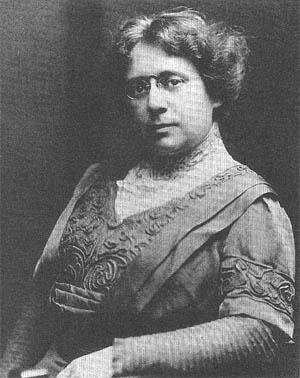
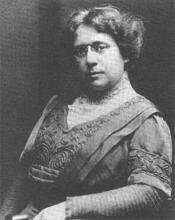
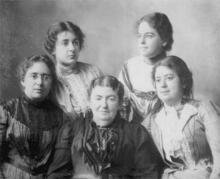
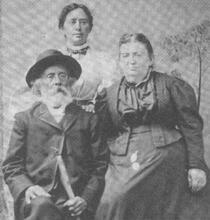
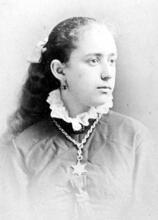


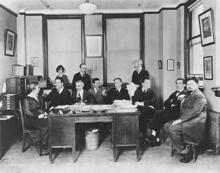
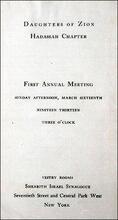
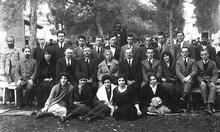
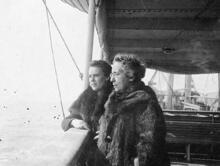
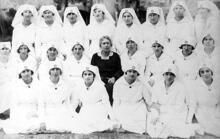


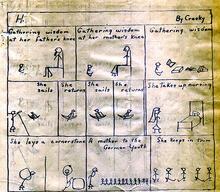
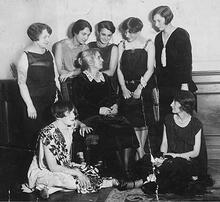


https://jewishnc.org/138-year-old-congregation-emanuel-restored-to-orig…
I am a Daughter of the American Revolution in North Carolina. My hope is to help save & restore Congregation Emanuel in Statesville, NC.
History related to Henrietta Szold is there. The cornerstone of Congregation Emanuel's building has important documents that the Lewis Gordon Family helped preserve years ago.
Honoring our Jewish Patriots in America and Preserving the history helps restore hope of freedom and justice for all.
The Jewish Museum of Maryland's exhibition and catalog "Daughter of Zion: Henrietta Szold and American Jewish Womanhood" is an example of what the DAR is currently doing to preserve our history.
The DAR Library’s collection contains resources pertaining to several different under- represented groups. The staff is actively working to expand the Library’s holdings pertaining to members of marginalized populations, with a particular focus on histories of the colonial and early federal eras. The Library welcomes suggestions of new resources to add to further strengthen the collection to better serve all visitors.
For individuals pursuing research on Jewish ancestors, patrons can begin with the general religions section (GEN RELIGIONS JUDAISM) or by focusing on the geographic location the ancestor lived in the states collection. A partial list of the
most frequently requested books and resources is below. As always, it is best to start with a search of the Library catalog, which is accessible from any computer terminal and on the internet at www.dar.org/library.
I HAVE A LETTER TYPEWRITTEN AND SIGNED BY HENRIETTA SZOLD SENT TO MY GRANDMOTHER IN 1944. ITS IN A FRAME. MY GRANDMOTHER STARTED A HADASSAH GROUP HERE IN LOS ANGELES IN 1944.
WOULD YOU LIKE THIS LETTER? I WOULD BE HAPPY TO SEND IT TO YOU.
NANCY GOODFRIED GOLFETE1@AOL.COM 818 809-6225
I have read all of this for the first time but after reading it will like to say that it is the best sort of information.
This article neglects to mention that, in my understanding, Henrietta took the unpopular position, along with Judah Magnus and Martin Buber, among others, of supporting an Arab-Jewish collaborative and bi-national State of Israel.
In reply to <p>This article neglects to by Harriet Jerush…
Szold's support for a bi-national state is mentioned in the section on the Yishuv.